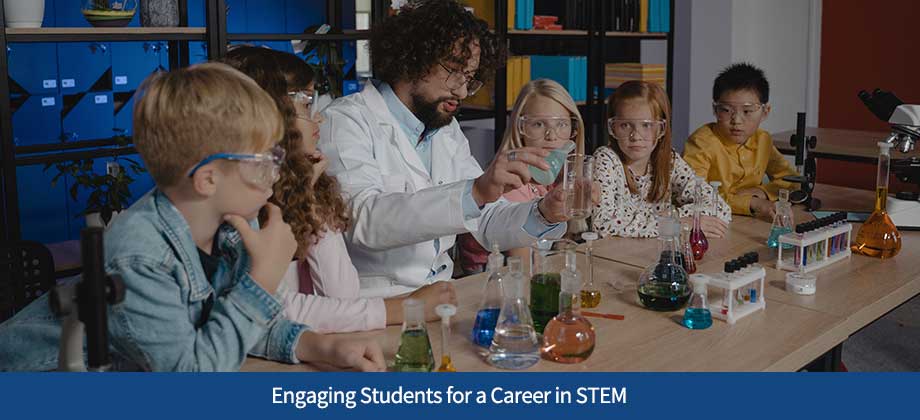Engaging Students for a Career in STEM

As younger generations begin entering the workforce, more of a focus is being put on careers that can have meaningful impacts on society at large. We’re talking climate change, sustainable manufacturing processes, etc. That’s why it’s widely anticipated that STEM careers—those in the science, technology, engineering, and mathematics industries—will be the next big focus for high school graduates. After all, STEM careers have increased a staggering 79 percent since 1990. However, a workforce is only as good at the talent it employs, and we all know that a diverse workforce is the key to innovation and success. Today, minorities and those in under-funded communities barely tip the needle in STEM careers. According to PEW Research, “Black students earned 7% of STEM bachelor’s degrees as of 2018, the most recent year available, below their share of all bachelor’s degrees (10%) or their share of the adult population (12%). The share of Hispanic college graduates with a STEM degree –12%– remains lower than that for all college graduates (15%) in 2018.” White workers account for 67 percent of the STEM workforce. STEM occupations are even projected by the Bureau of Labor Statistics to grow twice as fast as the total for all occupations in the next decade, according to the website. This all begs the question: how can we engage more students, specifically minorities, for a potential career in STEM?
The more important step to getting more Black and Hispanic candidates into the pool of STEM workers is to increase awareness of these careers at the elementary, middle, and high school levels. STEM industries are in dire need of diverse thought leaders who represent what our planet looks like as a whole, and companies need to set their sights on prioritizing partnerships that value education and exposure. The U.S. Department of Education recently laid out a plan under the Biden-Harris administration called “Raise the Bar: STEM Excellence for All Students.” The effort was created to strengthen science, technology, engineering, and mathematics (STEM) education across the nation and hopes to increase awareness of these careers beginning in Pre-K. It outlines how federal funding can be used support STEM teaching, and even includes a partnership with Beyond100K “to identify the key challenges regarding the supply and demand of STEM teachers at the state and local levels. Additionally, Beyond100K will co-sponsor a series of national communities of practices to support states and school districts in developing and implementing scalable solutions to the STEM educator shortage and improve equitable access to high-quality STEM instruction for marginalized students.”
While we’re increasing awareness of STEM careers, it’s also important to increase access to hands-on training. And it’s not just the schools that have homework to do: Manufacturers, for instance, can partner with local community colleges to engage with students in a real-life factory setting, where they can see first-hand what it’s like to work on the factory floor. Manufacturing management also plays a role in moving the needle: by visiting local schools and talking up the vast opportunities available in STEM (it’s not all sitting in front of a computer screen!), these real-life professionals can spark interest in the area’s youth.
STEM jobs have grown significantly, there is no doubt about that. But we still have work to do when it comes to appealing to the next generation of workers. We need to increase our focus on minorities in STEM if we want to create a diverse, successful pipeline of future employees—because at the end of the day, they’re the ones who will be shaping our future as well. The moral here? STEM is growing—spread the word.
Your privacy is important to us. ARF Financial will never sell or rent your information to any third party. Click here for more information about our privacy policy.

